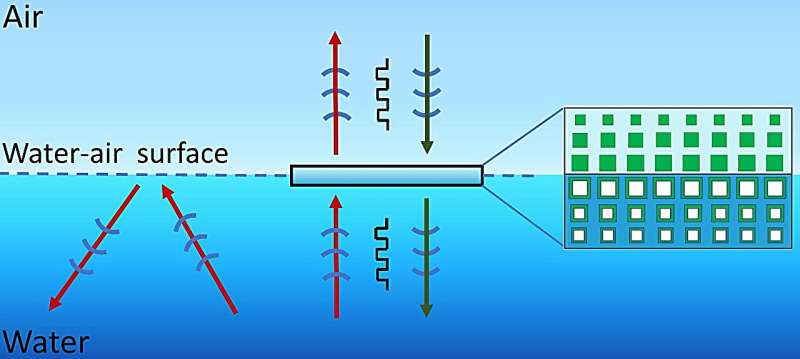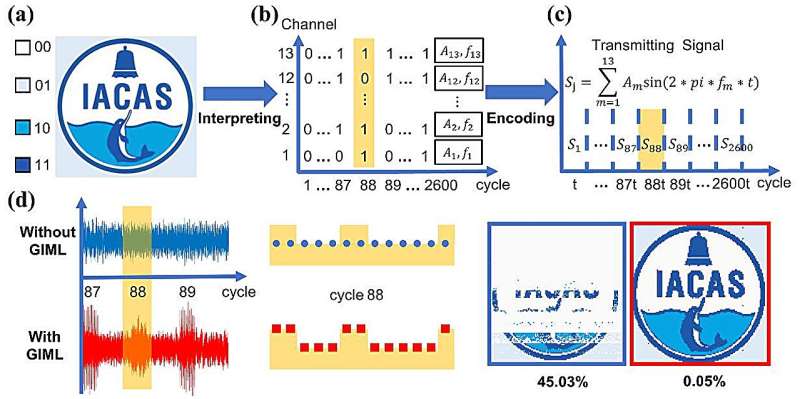This article has been reviewed according to Science X's editorial process and policies. Editors have highlighted the following attributes while ensuring the content's credibility:
fact-checked
peer-reviewed publication
trusted source
proofread
Researchers realize water-air acoustic communication based on broadband impedance matching

With increasing demand for exploration and utilization of marine resources, achieving direct and efficient communication between water and air has been an urgent need. Sound waves, as the only propagation way with low attenuation in both water and air, has been considered the most practical way to achieve water-air communication.
However, previous studies can only realize narrow-band sound transmission based on resonance, which limits communication capacity and efficiency.
To achieve efficient water-air acoustic communication, researchers from the Institute of Acoustics of the Chinese Academy of Sciences (IACAS) have combined air-based and water-based metafluids to realize an exponential gradient impedance matching layer for broadband water-air sound transmission.
The study was published in Applied Physics Letters on Nov. 6.
By cooperatively adjusting sound velocity and thickness in matching layers, the researchers modulated required acoustic parameters of the gradient impedance matching layer (GIML) into an achievable range, which promises the realization of the water-air GIML.
They constructed the designed matching layer sample and measured the sound transmission enhancement in a water tank. Experimental results showed that the proposed matching layer could achieve an average sound energy transmission enhancement above 16.7dB from 880Hz to 1760Hz across the water-air interface.

Furthermore, they selected a multicolor picture and encoded it on the transmission frequency band of the impedance matching layer. The encoded signals were emitted in air and received in water.
They found that the received picture through the bare interface could hardly be recognized with a bit error rate up to 45.03%, while the received picture through GIML was almost the same as the target picture with a negligible bit error rate of 0.05%. The broadband impedance matching between air and water could promote the applications in water-air acoustic communication.
This work provides reference for the design and realization of the broadband impedance matching between extreme media like water and air. Moreover, the achieved broadband water-air sound transmission has important application prospects for numerous ocean exploration applications and underwater sound pollution reduction.
More information: Ping Zhou et al, Water–air acoustic communication based on broadband impedance matching, Applied Physics Letters (2023). DOI: 10.1063/5.0168562
Journal information: Applied Physics Letters
Provided by Chinese Academy of Sciences





















